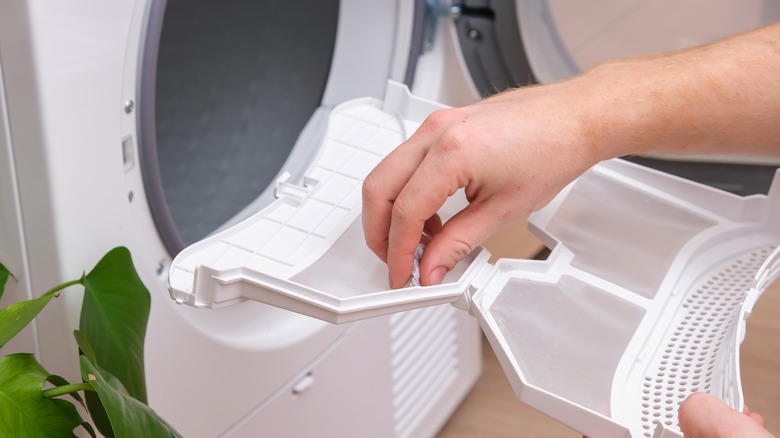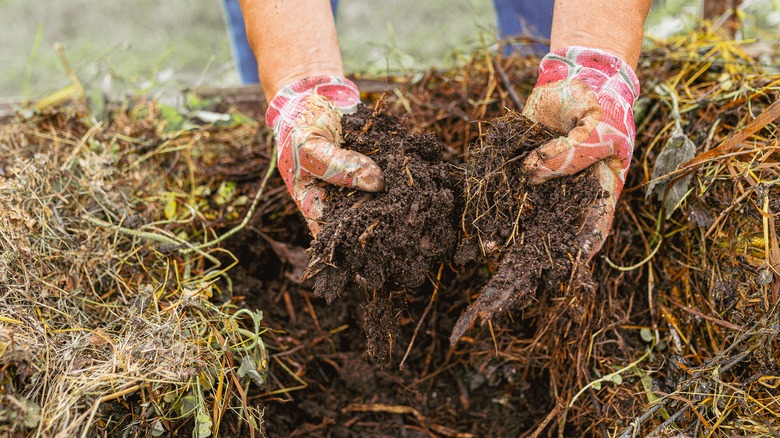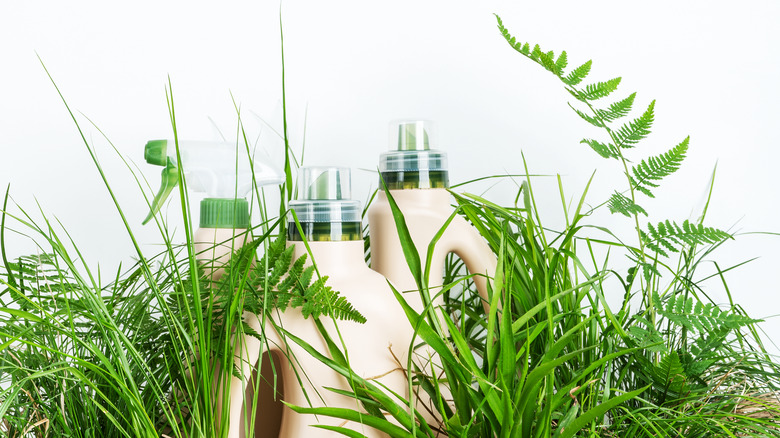Is It Beneficial To Compost Your Dryer Lint?
Maintaining a compost pile is essential to creating the perfect garden. Compost keeps garden soil healthy and fluffy, helping plants grow more quickly and resist disease. By tossing a few kitchen scraps and other materials into your pile daily, you can generate rich, nutritious soil that your plants will love! Not all materials are ideal for mixing into your compost, but dryer lint may be one surprising beneficial ingredient.
A well-balanced compost pile must have green and brown materials mixed in. Green materials include recently-living composting matter such as banana peels, grass clippings, manure, and food scraps. Brown materials are often described as woody, earthy, or "dead" composting matter rich in carbon, via Help Me Compost. These compost ingredients are usually brown; hence they are called "brown" materials. Examples of brown compost materials include wood shavings, straws, leaves, newspapers, and more. Dryer lint isn't always brown, but it does fall under this category, so small amounts can be beneficial to add to your compost pile.
Benefits of composting dryer lint
Dryer lint isn't as powerful or necessary as other composting materials, such as food scraps and manure, but it can enhance your compost in a few critical ways. It is a good source of fiber for your compost, which is crucial to helping the soil stay aerated and smooth. A soft, fluffy texture keeps air moving through the soil, which lowers the risk for your plants to develop diseases like root rot. Fiber from dryer lint is also an excellent ingredient to help soil lock in moisture. Because it is lightweight and fluffy, water molecules can quickly accumulate in the lint particles without bogging down your garden bed.
Carbon is another beneficial component found in dryer lint. According to a 2013 study published in the Advances in Agronomy, carbon is a crucial element of soil that influences water capacity, drainage, nutrient storage, and more. The carbon cycle plays a vital role in root production, and roots, in turn, generate more carbon in the soil. Many commercial fertilizers rely on nitrogen to temporarily speed up root production, but adding compost is a much better option for your garden's long-term health. Composting with carbon-rich dryer lint benefits root health, plant development, and soil quality. In summary, dryer lint is a great ingredient to mix into your compost pile because it encourages perfectly fluffy, damp, and carbon-rich soil.
How to use dryer lint in your compost
If you plan to use dryer lint in your compost, you should do so in moderation. Too much brown material, like dryer lint, can bring your compost pile out of balance. Collect dryer lint from your lint trap and store it in a handy container, like an old coffee tin. Adding a small handful of dryer lint to the compost pile every few weeks should be sufficient to reap the benefits of light, fluffy soil. Just be sure to balance your compost pile with plenty of green materials!
It's also important to note that not all dryer lint is created equal. Good dryer lint for compost should be free from toxic chemicals and pollutants. According to Scientific American, dryer lint from synthetic fabrics like polyester is filled with micro-plastics, which aren't good for you, your garden, or the environment. Make the switch to a biodegradable laundry detergent if you want to add dryer lint to your compost, and only compost the lint from organic fabrics like cotton and wool. Your garden and the planet will thank you!


